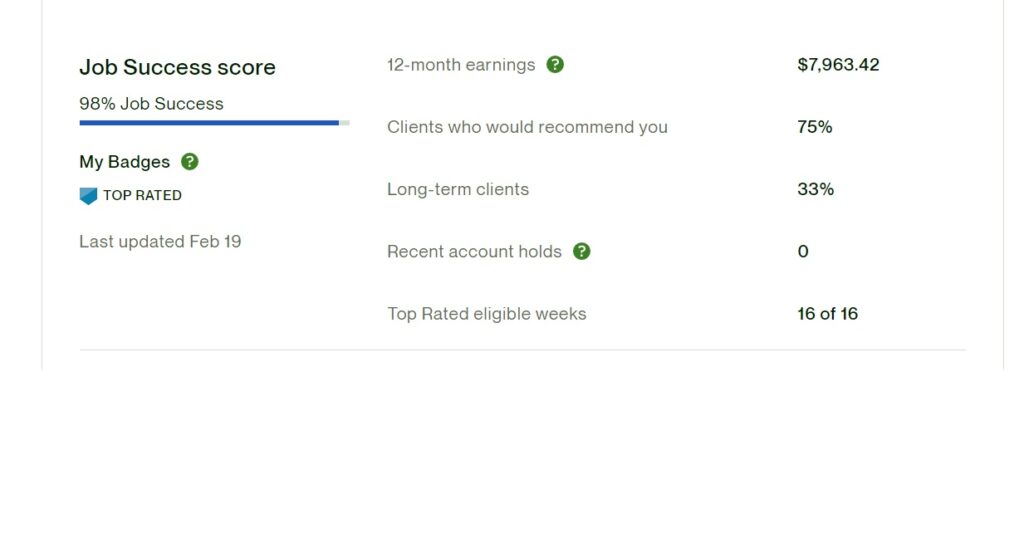Starting your own blog in 2023 has never been easier or more exciting. With the wide variety of tools and resources available, you can create a unique and engaging online space for your voice to be heard. In this comprehensive guide, we’ll explore the essential steps to start your own blog, complete with detailed instructions, helpful tips, and valuable insights.
Choosing a Niche
The first step to starting your own blog is to choose a niche. A niche is a specialized topic or area of interest that you’ll focus on in your blog. By selecting a niche, you can target a specific audience, allowing your content to resonate with your readers.
To choose the right niche for your blog, consider your passions, hobbies, and expertise. You should also research potential competition and market demand for your chosen niche. By identifying a gap in the market or a unique angle, you can set your blog apart from the competition.
Selecting a Blogging Platform
Next, you’ll need to select a blogging platform. A blogging platform is the software or service you’ll use to create and manage your blog. There are numerous platforms available, each with its own features, pricing, and ease of use.
Popular blogging platforms include:
When choosing a platform, consider your budget, technical skills, and the level of customization you desire. For beginners, WordPress is highly recommended due to its flexibility, large community, and extensive range of themes and plugins.
Picking a Domain Name
A domain name is the web address where your blog will be found, such as “yourblog.com.” Picking a domain name is a critical step, as it will represent your blog’s identity and be the first impression for potential readers.
To choose an effective domain name:
- Keep it short, memorable, and easy to spell.
- Include your niche or main keyword if possible.
- Avoid numbers, hyphens, and confusing words.
- Use a reputable domain registrar like GoDaddy or Namecheap to check availability and purchase your domain.
Setting up Web Hosting
Once you have your domain name, you’ll need to set up web hosting. A web hosting provider stores your blog’s files and serves them to visitors when they access your domain. There are various hosting providers, each with its own pricing plans and features.
Popular web hosting providers include:
- Bluehost
- SiteGround
- HostGator
- A2 Hosting
- DreamHost
When selecting a hosting provider, consider factors like cost, reliability, customer support, and ease of use. For beginners, Bluehost is a popular choice due to its affordable pricing, user-friendly interface, and WordPress integration.
Installing and Customizing Your Blog
After setting up your domain and hosting, it’s time to install and customize your blog. If you’ve chosen WordPress as your blogging platform, you’ll need to install the WordPress software on your hosting account. Most hosting providers offer a one-click installation option, making this process simple and straightforward.
Once WordPress is installed, you can begin customizing your blog by selecting a theme, which determines the overall design and layout. There are thousands of free and premium WordPress themes available, catering to various niches and styles. You can also further customize your blog with plugins, which add additional functionality such as social sharing buttons, contact forms, or SEO tools.
Creating High-Quality Content
With your blog set up and customized, it’s time to start creating high-quality content. Content is the backbone of your blog and the key to attracting and retaining readers. Aim to write engaging, informative, and useful posts that provide value to your audience.
To create high-quality content:
- Write in a unique and authentic voice that reflects your personality and expertise.
- Use attention-grabbing headlines and well-structured paragraphs for easy readability.
- Incorporate relevant keywords and phrases to improve your blog’s SEO.
- Include images, videos, and other multimedia elements to enhance your content.
- Edit and proofread your posts to ensure they are free from errors and inconsistencies.

Promoting Your Blog
Once you’ve published several high-quality posts, it’s time to promote your blog. Promoting your blog helps to increase its visibility, attract more visitors, and grow your audience.
Effective blog promotion strategies include:
- Sharing your posts on social media platforms like Facebook, Twitter, and LinkedIn.
- Engaging in online communities and forums related to your niche.
- Collaborating with other bloggers through guest posting, interviews, or round-up posts.
- Optimizing your content for search engines with SEO best practices.
- Utilizing email marketing to keep your readers informed and engaged.
Monetizing Your Blog
As your blog grows and attracts more readers, you may want to explore ways to monetize your blog. Monetizing your blog can generate income and help to support the ongoing costs of running and maintaining your online presence.
Popular blog monetization methods include:
- Displaying advertisements through platforms like Google AdSense or Mediavine.
- Promoting affiliate products or services and earning a commission on sales.
- Selling digital products such as ebooks, courses, or printables.
- Offering sponsored content or partnerships to brands in your niche.
- Providing freelance services or consulting related to your expertise.
Maintaining and Growing Your Blog
Finally, it’s essential to consistently maintain and grow your blog. Regularly updating your content, improving your blog’s design and functionality, and staying engaged with your audience will help ensure your blog remains relevant and successful.
To maintain and grow your blog:
- Create and follow a content schedule to ensure consistent posting.
- Regularly review and update older posts to keep them fresh and accurate.
- Monitor your blog’s performance using analytics tools like Google Analytics.
- Seek feedback from your audience and adapt your content strategy accordingly
- Network with other bloggers and industry influencers to stay informed about trends and opportunities.
Conclusion
Starting your own blog in 2023 is a rewarding and fulfilling endeavor that allows you to share your passions, expertise, and insights with the world. By following the steps outlined in this comprehensive guide, you’ll be well on your way to creating a unique and engaging online space that resonates with your target audience.
Frequently Asked Questions

1. How much does it cost to start a blog?
The cost of starting a blog can vary depending on the platform, hosting provider, and additional features you choose. Generally, you can expect to spend anywhere from $50 to $200 per year on domain registration, hosting, and premium themes or plugins.
2. How long does it take to start a blog?
The time required to start a blog can range from a few hours to several days, depending on your technical skills, the complexity of your blog’s design, and the amount of content you plan to launch with. It’s essential to invest time and effort upfront to create a high-quality, well-designed blog that will attract and retain readers.
3. Can I start a blog without any technical skills?
Yes, you can start a blog without any technical skills. Platforms like WordPress and Wix offer user-friendly interfaces and step-by-step guides to help you create and customize your blog. Additionally, there are numerous online resources and tutorials available to help you navigate the process.
4. How often should I publish new content on my blog?
The frequency of publishing new content on your blog depends on your niche, audience, and personal schedule. As a general rule, aim to publish at least one high-quality post per week. Consistency is essential, as it helps to establish trust and credibility with your readers, and search engines favor regularly updated content.
5. How long should my blog posts be?
The ideal length of a blog post can vary depending on the topic, niche, and your audience’s preferences. However, long-form content (typically around 2,000 words or more) has been shown to perform well in search engine rankings and to provide more in-depth, comprehensive information for readers. Aim to strike a balance between thorough, valuable content and readability by breaking your posts into shorter paragraphs and using subheadings for easy navigation.
6. How do I drive traffic to my blog?
Driving traffic to your blog involves a combination of promotional strategies, including social media marketing, search engine optimization (SEO), guest posting, and engaging with online communities related to your niche. Building a loyal audience takes time and persistence, so be patient and consistently focus on creating high-quality content and promoting your blog effectively.
7. How do I choose the right keywords for my blog?
Choosing the right keywords for your blog involves researching terms and phrases that are relevant to your niche and have a high search volume but low competition. Tools like Google Keyword Planner, SEMrush, and Ahrefs can help you identify suitable keywords to target in your content. Incorporate these keywords naturally throughout your blog posts, headlines, and meta descriptions to improve your search engine rankings and visibility.









